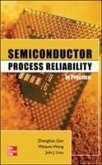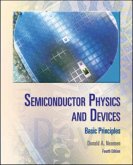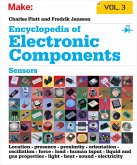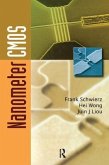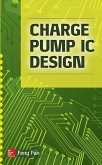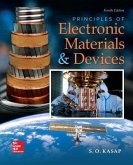Sanjaya Maniktala
Switching Power Supply Design & Optimization
Sanjaya Maniktala
Switching Power Supply Design & Optimization
- Gebundenes Buch
- Merkliste
- Auf die Merkliste
- Bewerten Bewerten
- Teilen
- Produkt teilen
- Produkterinnerung
- Produkterinnerung
Features techniques for designing power supplies, including resonant (LLC) converters. This book explains how to design reliable, high-performance switching power supplies for electronics.
Andere Kunden interessierten sich auch für
![Beginner's Guide to Reading Schematics, Fourth Edition Beginner's Guide to Reading Schematics, Fourth Edition]() Stan GibiliscoBeginner's Guide to Reading Schematics, Fourth Edition28,99 €
Stan GibiliscoBeginner's Guide to Reading Schematics, Fourth Edition28,99 €![Semiconductor Process Reliability in Practice Semiconductor Process Reliability in Practice]() Zhenghao GanSemiconductor Process Reliability in Practice155,99 €
Zhenghao GanSemiconductor Process Reliability in Practice155,99 €![Semiconductor Physics and Devices Semiconductor Physics and Devices]() Donald A. NeamenSemiconductor Physics and Devices266,99 €
Donald A. NeamenSemiconductor Physics and Devices266,99 €![Encyclopedia of Electronic Components, Volume 3 Encyclopedia of Electronic Components, Volume 3]() Charles PlattEncyclopedia of Electronic Components, Volume 330,99 €
Charles PlattEncyclopedia of Electronic Components, Volume 330,99 €![Nanometer CMOS Nanometer CMOS]() Juin J. LiouNanometer CMOS156,99 €
Juin J. LiouNanometer CMOS156,99 €![Charge Pump IC Design Charge Pump IC Design]() Feng PanCharge Pump IC Design159,99 €
Feng PanCharge Pump IC Design159,99 €![Principles of Electronic Materials and Devices Principles of Electronic Materials and Devices]() Safa O. KasapPrinciples of Electronic Materials and Devices368,99 €
Safa O. KasapPrinciples of Electronic Materials and Devices368,99 €-
-
-
Features techniques for designing power supplies, including resonant (LLC) converters. This book explains how to design reliable, high-performance switching power supplies for electronics.
Produktdetails
- Produktdetails
- Verlag: McGraw-Hill Education - Europe
- 2 ed
- Seitenzahl: 576
- Erscheinungstermin: 13. März 2014
- Englisch
- Abmessung: 289mm x 224mm x 40mm
- Gewicht: 1672g
- ISBN-13: 9780071798143
- ISBN-10: 0071798145
- Artikelnr.: 36269708
- Herstellerkennzeichnung
- Libri GmbH
- Europaallee 1
- 36244 Bad Hersfeld
- gpsr@libri.de
- Verlag: McGraw-Hill Education - Europe
- 2 ed
- Seitenzahl: 576
- Erscheinungstermin: 13. März 2014
- Englisch
- Abmessung: 289mm x 224mm x 40mm
- Gewicht: 1672g
- ISBN-13: 9780071798143
- ISBN-10: 0071798145
- Artikelnr.: 36269708
- Herstellerkennzeichnung
- Libri GmbH
- Europaallee 1
- 36244 Bad Hersfeld
- gpsr@libri.de
Sanjaya Maniktala is a Systems and Product Architecture Engineer with Freescale Semiconductor. He holds two patents in power supply technology and has written numerous articles on power supply design, appearing in such magazines as Power Electronics Technology, EDN, Electronic Engineering, and Planet Analog. He lives in Gilbert, Arizona.
Ch. 1. Basic Switching Topologies and Selection of Components
Ch. 2. Constructing Modern DC-DC Converters from Basic Topologies
Ch. 3. Tapped-Inductor Topologies and Solved Examples
Ch. 4. Boundary/Discontinuous Conduction Mode Equations and Solved Examples
Ch. 5. Loop Stability of DC-DC Converters
Ch. 6. Charge Pumps, Techniques, and Applications of Modern DC-DC
Converters
Ch. 7. Reference Equations and Graphs for DC-DC Converter Design
Ch. 8. Front-End of Off-Line Power Supplies
Ch. 9. Isolated Topologies for Off-Line Applications
Ch. 10. Concepts in Magnetics and Core Size Selection
Ch. 11. Selecting Inductors for DC-DC Converters
Ch. 12: Flyback Transformer and Clamp Design
Ch. 13. Forward Converter Magnetics Design
Ch. 14. Singled and Multilayer PCGs and Layout
Ch. 15. Thermal Management
Ch. 16. Practical EMI Filter Design
Ch. 17. More Things to Try
Ch. 18. Reliability, Testing, and Safety Issues
Appendix
FAQ: Components and Topologies
Ch. 2. Constructing Modern DC-DC Converters from Basic Topologies
Ch. 3. Tapped-Inductor Topologies and Solved Examples
Ch. 4. Boundary/Discontinuous Conduction Mode Equations and Solved Examples
Ch. 5. Loop Stability of DC-DC Converters
Ch. 6. Charge Pumps, Techniques, and Applications of Modern DC-DC
Converters
Ch. 7. Reference Equations and Graphs for DC-DC Converter Design
Ch. 8. Front-End of Off-Line Power Supplies
Ch. 9. Isolated Topologies for Off-Line Applications
Ch. 10. Concepts in Magnetics and Core Size Selection
Ch. 11. Selecting Inductors for DC-DC Converters
Ch. 12: Flyback Transformer and Clamp Design
Ch. 13. Forward Converter Magnetics Design
Ch. 14. Singled and Multilayer PCGs and Layout
Ch. 15. Thermal Management
Ch. 16. Practical EMI Filter Design
Ch. 17. More Things to Try
Ch. 18. Reliability, Testing, and Safety Issues
Appendix
FAQ: Components and Topologies
Ch. 1. Basic Switching Topologies and Selection of Components
Ch. 2. Constructing Modern DC-DC Converters from Basic Topologies
Ch. 3. Tapped-Inductor Topologies and Solved Examples
Ch. 4. Boundary/Discontinuous Conduction Mode Equations and Solved Examples
Ch. 5. Loop Stability of DC-DC Converters
Ch. 6. Charge Pumps, Techniques, and Applications of Modern DC-DC
Converters
Ch. 7. Reference Equations and Graphs for DC-DC Converter Design
Ch. 8. Front-End of Off-Line Power Supplies
Ch. 9. Isolated Topologies for Off-Line Applications
Ch. 10. Concepts in Magnetics and Core Size Selection
Ch. 11. Selecting Inductors for DC-DC Converters
Ch. 12: Flyback Transformer and Clamp Design
Ch. 13. Forward Converter Magnetics Design
Ch. 14. Singled and Multilayer PCGs and Layout
Ch. 15. Thermal Management
Ch. 16. Practical EMI Filter Design
Ch. 17. More Things to Try
Ch. 18. Reliability, Testing, and Safety Issues
Appendix
FAQ: Components and Topologies
Ch. 2. Constructing Modern DC-DC Converters from Basic Topologies
Ch. 3. Tapped-Inductor Topologies and Solved Examples
Ch. 4. Boundary/Discontinuous Conduction Mode Equations and Solved Examples
Ch. 5. Loop Stability of DC-DC Converters
Ch. 6. Charge Pumps, Techniques, and Applications of Modern DC-DC
Converters
Ch. 7. Reference Equations and Graphs for DC-DC Converter Design
Ch. 8. Front-End of Off-Line Power Supplies
Ch. 9. Isolated Topologies for Off-Line Applications
Ch. 10. Concepts in Magnetics and Core Size Selection
Ch. 11. Selecting Inductors for DC-DC Converters
Ch. 12: Flyback Transformer and Clamp Design
Ch. 13. Forward Converter Magnetics Design
Ch. 14. Singled and Multilayer PCGs and Layout
Ch. 15. Thermal Management
Ch. 16. Practical EMI Filter Design
Ch. 17. More Things to Try
Ch. 18. Reliability, Testing, and Safety Issues
Appendix
FAQ: Components and Topologies



